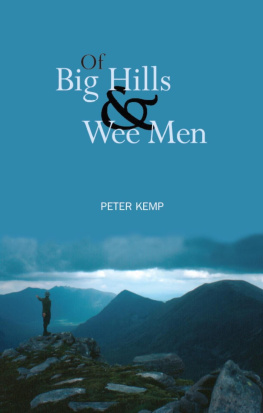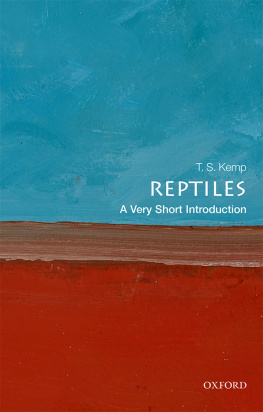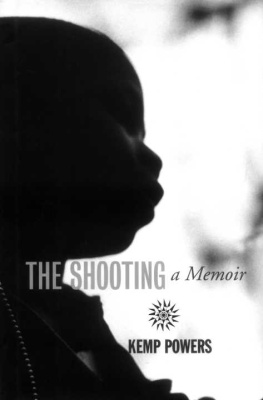Acknowledgments
This book wouldnt have been possible without the help of lots of people. Most importantly, Id like to thank all the scientists I spoke with, including: Elissa Aminoff, Claudio Aporta, Timothy Behrens, Vronique Bohbot, Neil Burgess, Ariane Burke, Ford Burles, Heather Burte, Gyrgy Buzski, Elizabeth Cashdan, Elizabeth Chrastil, Fred Coolidge, Antoine Coutrot, Jeremy Crampton, Louisa Dahmani, Daniel Dilks, Nico Dosenbach, Paul Dudchenko, Arne Ekstrom, Russell Epstein, Andr Fenton, Loren Frank, Klaus Gramann, Eva-Maria Griesbauer, Mary Hegarty, Vibol Heng, Ralph Holloway, Giuseppe Iaria, Joshua Jacobs, Kate Jeffery, Robert Koester, Lukas Kunz, Allen Lin, Eleanor Maguire, Edvard Moser, Alysson Muotri, Lynn Nadel, Aurel Nagy, Simon Neubauer, Nora Newcombe, Kaili Rimfeld, Noel Santillan, Richard Smeyne, Hugo Spiers, Larry Squire, Brett Stoffel, Ian Tattersall, Ben Trumble, Jeffrey Taube, Menno Witter, Thomas Wolbers, and Harald Wolf.
Thanks to Breena Kerr for her kind assistance. Thanks to D. Dauphinee for his excellent book on Gerry Largays disappearance, When You Find My Body.
Thanks to all the lost people, especially Amanda Eller, Nadine Bonnett, Janice Nathan, Sharon Roseman, and Scott Kelbell. And the unlost, like Thierry Gueorgiou.
Thanks to the book people: my agent Katherine Flynn, and my first editor Quynh Do, who saw the value in the project. Endless thanks to editor Melanie Tortoroli, and fixer Mo Crist, and editor Dassi Zeidel, and copyeditor Jodi Beder, who all carried it across the finish line. In the UK, thanks to Cecily Gayford and Ellen Johl at Profile/Wellcome. Thanks in advance to all the bad reviewers: I like your reviews most of all.
Thanks to my buddy Nate Levine for the brain images, and to my good friend Charlie White for images that werent used but were valuable to me regardless. Thanks to my bosses Caryl and Jack at Michigan State University for providing a great workplace.
Most importantly, I have succeeded thanks to the care and love of my entire family. Where would I beliterally, where would I be?without my spirit guides Max, Izzy, and Rowan? And how well would I fare if I didnt borrow Emelines impeccable and beautiful brain every day?
ALSO BY CHRISTOPHER KEMP
The Lost Species: Great Expeditions in the Collections of Natural History Museums
Floating Gold: A Natural (and Unnatural) History of Ambergris
Appendix I

What to Do If Youre Lost in the Wild

Even in our lostness, we can be predictable, says Robert Koester. In 2008, Koester published Lost Person Behavior, a textbook now used worldwide as a field manual by search-and-rescue teams. Unsurprisingly, he rates his own spatial skills at a 9 out of 10. For almost two decades, hes been building an enormous databasea swirling cloud of data. He calls it the International Search and Rescue Incident Database. It contains millions of individual data points from almost 150,000 lost people: disoriented hunters, spelunkers, honeymooners, birdwatchers, mushroom pickers, escaped toddlers, sleepwalkers, moonshiners, survivalists, abductees, Alzheimers patients who have wandered into their pasts, and lost hikers like Amanda Eller. A 2012 study crunched more than a decade of data from Yosemite National Park and found that the average lost person is a solitary thirty-six-year-old man. He goes missing on a Saturday afternoon in July.
When someone is reported missing, Koester begins collecting data. Hell put a pin in a map to mark an individuals last known location, and then start to scrutinize the local geography. Koester wants to know: When an individual gets lost in the wild, does he follow the river as it drops into the valley, or does he climb uphill instead? Does he cross from one watershed to another? Does he follow a trail? Will a search party find him in a swamp, or on a mountain-side, or a boulder field? Is he injured? Suicidal? Will he be found a hundred meters from where he was last seen? When a hiker gets lost in Grand Canyon National Park, does he try to climb out of the canyon in the surging heat, or walk deeper into it? The possibilities are endless.
If two hikers get lost in the same knot of woodland a month apart, they might respond by heading in completely opposite directions. Each subsequent choicetake this fork, follow that path, stay in one placeleads to a multitude of new options, radiating outward forever and terminating in very different places. But when Koester combines the data from enough lost people, patterns begin to emerge. From those patterns, he can calculate probabilities that determine the likeliest locations a lost person might be found.
I have no clue where the missing person is, says Koester. All I can tell you is, if 100 people got lost from this location, this is what the distribution would look like. Theres going to be more likely areas and theres going to be less likely areas, and you should probably go and look in the more likely areas first.
With careful preparation, the majority of lost person incidents can be avoided in the first place, say Koester and Brett Stoffel, president of Emergency Response International, based in Washington, DC. Most importantly, always tell someone where you are hiking or camping, and when you plan to return. At the least, you should be prepared to make shelter, start a fire, signal for help, disinfect water, and treat minor injuries. Many people get into difficulties when they overestimate the distance they can travel in a single day. Travel in a group: 72 percent of search-and-rescue incidents involve a single person.
Stoffel and Koester say to bring a map and compass and know how to use them. Consider using a GPS device, and bring a fully charged cell phone, but dont rely on it. Pay attention to your surroundings and take note of landmarks, especially if you leave the trail. During a hike, turn around often to view your surroundings from different angles and viewpoints. Despite all these precautions, sometimes people become lost. This is what you should do if youre lost in the wild:
1. STOP
Dont act immediately. Instead, take a breath and stay calm. Drink some water and eat a snack. Spatial anxiety is real. People with DTD suffer from it to a greater degree than most people, but we all experience it at one time or another. Think about the last time you knew your location for certain. Look at your map. If you dont have a map, build one. If necessary, draw a map with a stick in the dirt.
2. SIGNA
Attempt to call 911 on your cell phone. Sometimes, even if a call is not possible, a text message can still be sent. If you have a Personal Locator Beacon, activate it and wait.
3. DECIDE
- a) Backtrack: if you can retrace your path safely and accurately to your start point, you should do so.
- b) Stay put: if youre hopelessly lost and cant backtrack, and you shared your travel plans with someone before the trip, you will be missed. A search party will come and find you. Stay in one place: dont be a moving target.
- c) Bail out: with a map and compass, you should be able to select a direction that will get you to a road or town. Avoid moving in a direction that takes you farther into danger, such as toward impassable cliffs or water that cant be crossed.
4. MOVE










